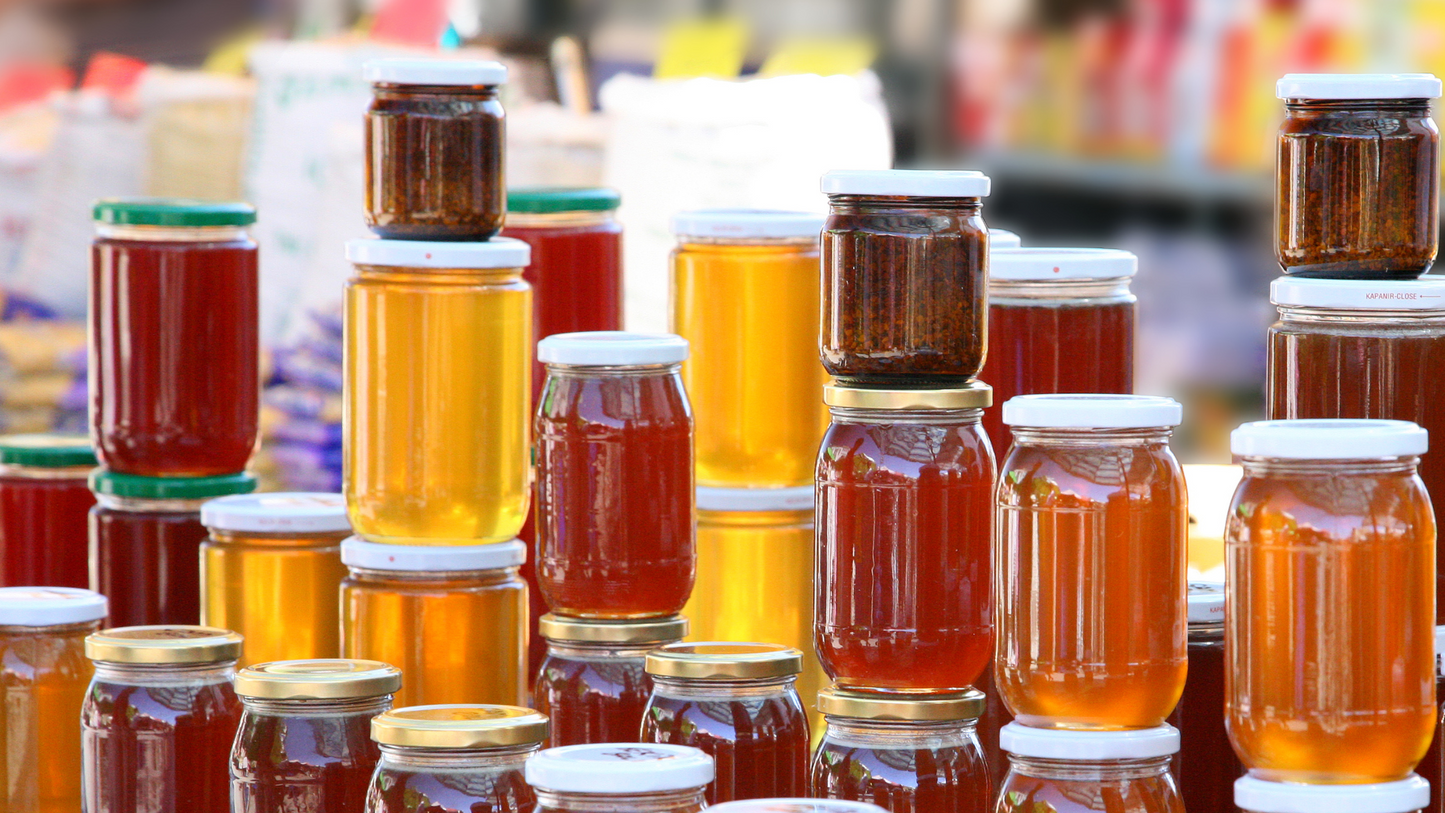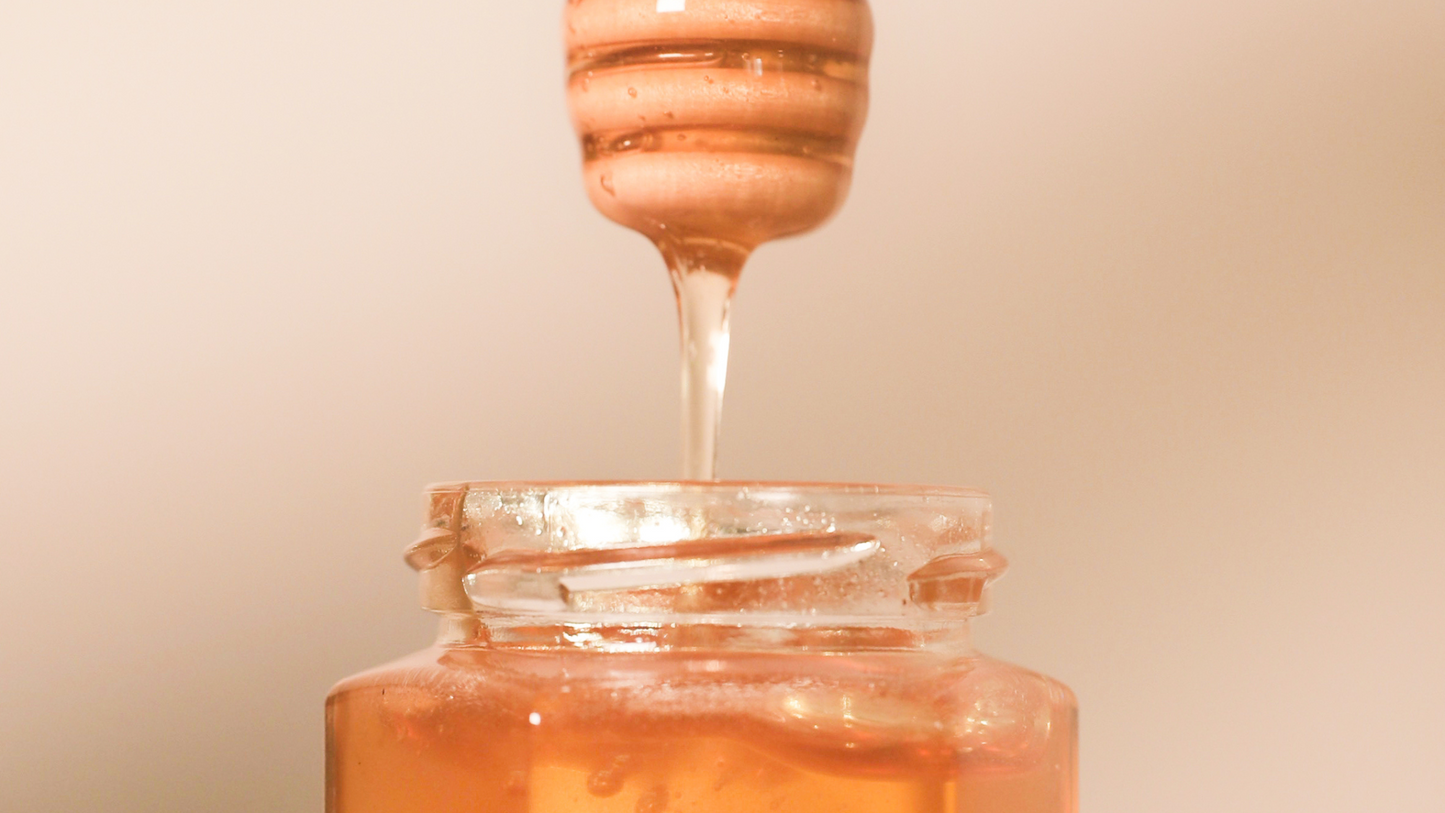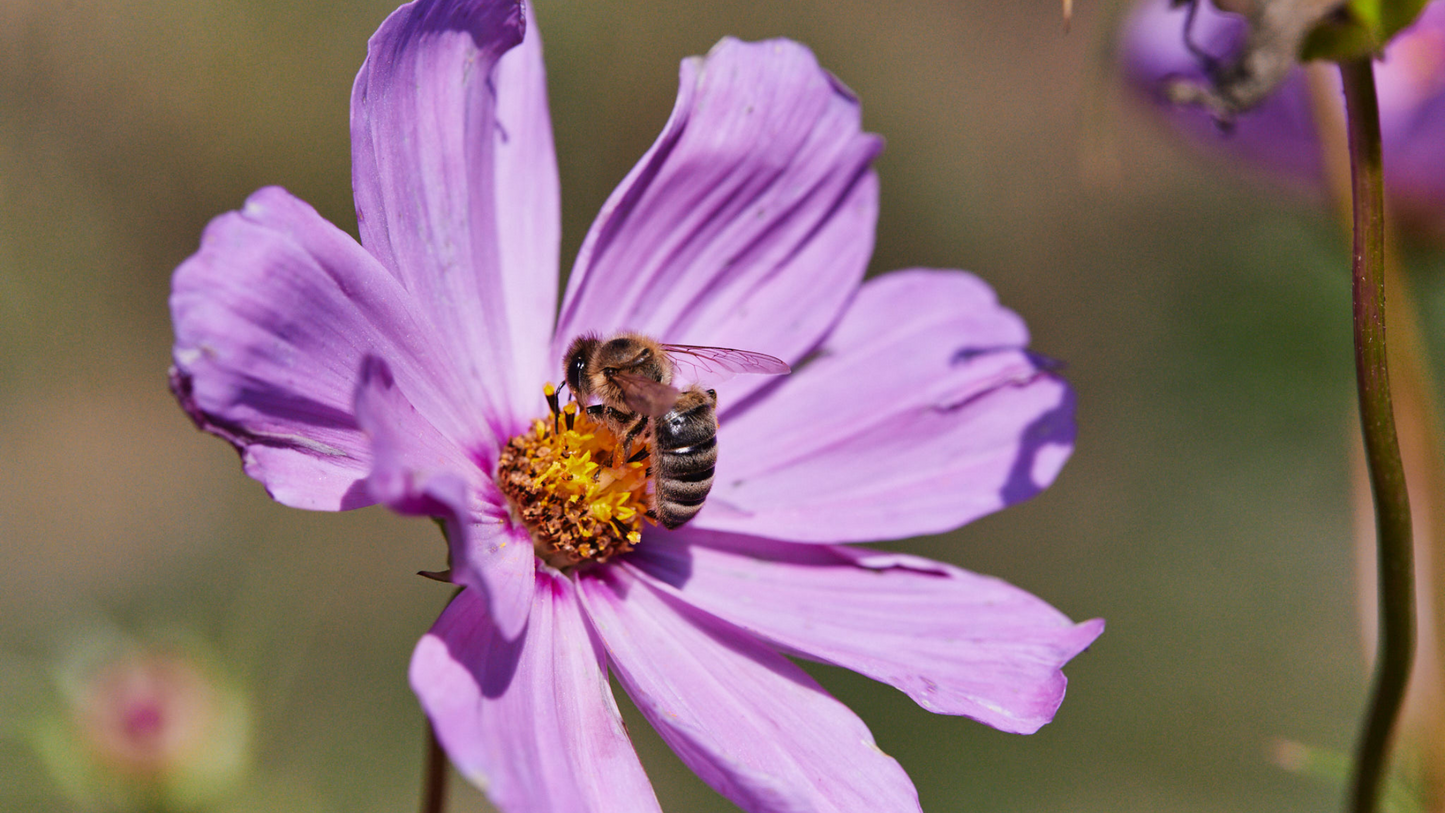
Authentic honey often ranges in colour and you’ll find shades from translucent light yellow all the way to a dark amber. To understand why this happens and what it means for you as a consumer, let’s talk about how bees make honey.
How Is Honey Made?
The first step to making honey is collecting nectar from various plants and flowers. The worker bee will visit around 50 to 100 flowers in a single trip and uses her secondary stomach, known as the honey stomach, to hold onto the nectar. The nectar that is collected is then taken back to the hive to be turned into honey. It is passed through the mouth and chewed from bee to bee, adding the enzymes that make raw honey so beneficial. The nectar is then stored in the cells of the honeycomb, where the bees use their wings to fan the nectar, evaporating the water and turning it into honey. The final step is a capping of beeswax to store and preserve the honey.
Sources of Nectar
Bees forage throughout Spring, Summer, and Fall. The different colours of the nectars that are gathered from the flowers that are in bloom provide the honey with their distinct shades. Spring Honey is made from plants like coltsfoot, dandelion, and maple trees which produce light nectar. Comparatively, Fall Honey is made from plants like goldenrod and aster, which produce darker nectar.
Other Factors
Other things that may make a difference include the age of the honey and the temperature. Honey is safe to eat indefinitely, but the colour may darken. It will also darken if caramelized with heat.
Generally, light-coloured honeys tend to have a milder flavour while darker honeys are more robust. You can try our Spring, Summer, and Fall Honey in this tasting pack to compare the flavours for yourself and find your favourite!



